Table of contents
Soy sauce (tamari) consists mainly of cooked, fermented soybeans - therefore it is never raw. Traditional tamari soy sauce contains little to no wheat and is also available organic.
Uses in the kitchen
What is tamari? Traditional tamari soy sauce (taremiso) is a byproduct of making miso (a fermented soy paste). Tamari available in America or Europe usually has little to do with the original tamari soy sauce. Strictly speaking, Western tamari soy sauce should be called shoyu tamari. 3
What is the difference between shoyu, tamari and white soy sauce?
Shoyu is Japanese and means 'soy sauce'. In Japanese cuisine, three varieties are mainly used, which differ in color, taste and salt content. The most common is ' Koikuchi-Shoyu '. This is also simply called Shoyu. Koikuchi-Shoyu has a dark brown color and a rich aroma. The salt content is on average 17 to 18%; a tablespoon of Shoyu contains about ½ teaspoon of salt. Koikuchi-Shoyu is used for sauces, soups and stir-fried dishes, or simply as a dip (e.g. with sushi). Koikuchi-Shoyu gives dishes a dark brown color and a wide range of flavors. 2
The second type of soy sauce is ' Usukuchi-Shoyu ' - the light soy sauce. To make light shoyu, the wheat is only lightly roasted. The honey-colored 'white soy sauce'. Seasoning sauce has a high wheat content. The fermentation time is shorter than with other soy sauces. White soy sauce is particularly suitable for clear soups. 1 In addition, more salt is added to slow down the fermentation. Sometimes a little mirin (sweet rice wine) is also added. This shoyu is lighter, the taste is less strong and the soy sauce contains a little more salt at 19%. Therefore, light shoyu is used in recipes in which a too dark color and too strong a taste are undesirable. 1,2
The third type of shoyu is called tamari. Tamari is traditionally only produced in a few Japanese prefectures: Aichi, Gifu and Mie. Tamari consists mainly of soybeans and contains little to no wheat. Only a small amount of water is added for fermentation. After 20 months of fermentation, tamari is a little thicker and tastes stronger than the other varieties. In contrast to the other shoyu, tamari is only used very sparingly as a seasoning to enhance the flavor. 2
The most important thing when cooking with soy sauce is to only cook it briefly. This preserves the natural aroma, taste and color. Because of the high salt content, it should only be added to cooked dishes towards the end of the cooking time so that the ingredients do not lose too much juice. However, this effect can be particularly delicious in some dishes: If you fry tofu with soy sauce, the tofu loses water and you get a crispy, browned tofu. Sesame goes very well with this. With pan or wok dishes, you can let the sauce run over the hot edge of the pan at the end. This quick "burning" gives the dish a caramelized taste.
Soy sauce is a wonderful ingredient for pickling and marinating. It has a high salt content, mild acidity (pH is around 4.8) and low alcohol content. All of these properties make it useful for preserving food. 2
Due to the manufacturing process, soy sauces have a special taste - umami. Umami is the fifth taste quality that we perceive with our taste buds, alongside sweet, sour, bitter and salty. This taste can be described as hearty and meaty. 13
Tip: You can replace table salt with soy sauce by adding it just before eating. Studies have shown that the food still tastes spicy enough even with less salt. 13,19
Vegan recipe for tamari marinade with tofu and vegetables
Ingredients (for 4 servings): 1 teaspoon sesame oil, 400 g tofu, 3 tablespoons tamari (organic), 2 teaspoons rice vinegar, 1 tablespoon maple syrup, 2 tablespoons sesame seeds (coarsely ground), 2 cm ginger (raw and grated or finely diced), 1 garlic clove (pressed), salt, 1 lemon (organic), vegetables (e.g. asparagus, pumpkin), spring onion.
Preparation: Cut the tofu into slices (approx. 1 cm), spread on a baking tray and sprinkle with sesame seeds. Bake at 170 °C until the tofu is slightly browned. Mix the sesame oil, tamari, rice vinegar, maple syrup, ginger, garlic and lemon juice to make a marinade.
Steam the seasonal vegetables. Finely chop the spring onions. Remove the baking tray from the oven and drizzle some marinade onto the tofu while it is still hot. Arrange the tofu and seasonal vegetables and garnish with spring onions and marinade. Vegan mashed potatoes go well with this.
Vegan recipes with soy sauce (tamari) can be found under the note: " Recipes that have the most of this ingredient ".
| Not only vegans or vegetarians should read this: Vegans often eat unhealthily. Avoidable nutritional errors. |
Purchasing - Storage
Tamari is available all year round in large retailers such as Coop, Migros, Denner, Volg, Spar, Aldi, Lidl, Rewe, Edeka, Hofer, Billa etc. Most organic supermarkets (e.g. Denn's Biomarkt and Alnatura), health food stores or natural food stores have organic Tamari. It is often unpasteurized and contains no wheat (gluten-free).
The availability of soy sauce (tamari) varies depending on the size of the store, catchment area, etc. You can find our recorded food prices for the DA-CH countries above under the ingredient image - and by clicking you can see their development at different suppliers.
Storage tips
Tamari does not necessarily have to be stored in the refrigerator. However, you should protect the soy sauce from sunlight, oxidation and heat. If well sealed and stored in a dark and cool place, Tamari will last for up to two years.
Ingredients - Nutritional values - Calories
The ingredients of soy sauce (Tamari) provide 60 kcal/100g. Of these, 0.1 g/100g are fat, 5.6 g/100g are carbohydrates and 11 g/100g are protein. Salt is the most important, at 14.19 g/100g; which corresponds to 591.2% of the recommended daily requirement. 4
Although soy sauce contains vitamins ( B3, B6) and minerals such as potassium, only the amino acids it contains and some bioactive metabolites are present in higher concentrations or are of importance:
100 g of soy sauce (tamari) contains about 0.18 g of tryptophan. A tablespoon of soy sauce weighs about 10 g and thus provides 7.3% of the daily requirement. This value is comparable to that of poppy seeds or paprika powder, although the amounts consumed in these are also small. You can find a lot of tryptophan indried pumpkin seeds (0.58 g/100g) or soybeans (0.59 g/100g). 4
Threonine is contained at 0.41 g/100g. 4.4% of the daily requirement can be consumed with one tablespoon of tamari. Quinoa or whole grain macaroni have a similar threonine concentration and are therefore a more extensive source of threonine. The leaders are spirulina (3 g/100g) and brewer's yeast (2.7 g/100g). 4
Tamari contains 0.49 g/100g isoleucine (39% of the daily requirement). This content is comparable to couscous, although you naturally eat more of it. Particularly good sources of isoleucine are soybeans (2 g/100g) and lupine flour (1.7 g/100g). 4
In addition to nutrients, bioactive substances with antioxidant effects can also be found in soy sauce (tamari). Firstly, secondary plant substances from the soybean and secondly, substances created by fermentation with 'koji': polyphenols (isoflavones, furanones, pyranones), melanoidins, free amino acids (proline, leucine and aspartic acid), furan ketones, phenolic acids, organic acids, β-carbolines and peptides with low molecular weight. 5,6
The complete ingredients of soy sauce (tamari), the coverage of the daily requirement and comparison values with other ingredients can be found in our nutrient tables. In the article Nutrients explained you will get a detailed insight into the topic.
Effects on health
Is soy sauce (tamari) healthy or unhealthy? The following effects have been observed in studies so far: promotion of gastric secretion, blood pressure lowering effect, antimicrobial activity, anticarcinogenic effects and soy sauce is said to help prevent cataracts. 12 In addition, antioxidant effects, antihyperuricemic (hyperuricemic = increased uric acid levels = factor for gout) and platelet aggregation-inhibiting activities have been shown. Platelet aggregation inhibitors prevent blood platelets from sticking together and reduce the body's ability to form blood clots. 6
However, the underlying studies are rare and the effects have not been fully researched. A 2019 study tested the physiological effects of soy sauce on nematodes ( Caenorhabditis elegans). The researchers observed that the nematodes that received soy sauce stored less fat than the control group that consumed salt water. An earlier study shows that salt promotes fat accumulation. 11
So does soy sauce reduce fat accumulation? Interestingly, soy sauce reduces the accumulation of fat in nematodes, despite high salt content. The reason for this is still unclear, and the results are only partially transferable to humans, although C. elegans has many genes that are similar to those of higher animals such as humans. 11
This study also shows that soy sauce has an antioxidant effect. Oxidative stress is closely linked to our health. It damages our cells and DNA, which causes us to age faster and leads to various diseases. The nematodes react with an increased tolerance to oxidative stress after consuming soy sauce. 11
Increased resistance to pathogens in nematodes has also been observed. Soy sauce increases the expression of several anti-stress genes. 11
Soybeans are a good source of protein. However, their nutritional value is limited by antinutrients. Heat and fermentation reduce these toxins. During fermentation, beneficial substances are produced, including bioactive peptides. These peptides can have antioxidant, antitumor, antidiabetic and antimicrobial effects. 9 The peptides are also said to have ACE-inhibiting properties. 9 ACE inhibitors are substances that can be used to treat high blood pressure and other cardiovascular diseases. Their name stands for 'angiotensin-converting enzyme'. They work by inhibiting the activity of the angiotensin-converting enzyme, which leads to dilation of the blood vessels and lowers blood pressure. These drugs are used to treat heart failure and kidney disease. 25
In general, secondary plant substances contained in soy products show short-term and long-term positive effects: reduction in total cholesterol and LDL cholesterol, reduced menopausal symptoms, and a lower incidence of metabolic diseases such as type 2 diabetes and cancer. This study also confirms the strong antioxidant properties of soy sauce. 16
Which soy sauce is healthy? We could not find any study that gives specific recommendations. A traditional (Japanese) brewed soy sauce of organic quality (unpasteurized if possible) is probably a good choice. However, we recommend keeping salt use to a low level. This also applies to products containing salt such as soy sauce.
Dangers - Intolerances - Side effects
Although soy is one of the most common food allergens, fermented products such as soy sauce, miso and natto themselves have an anti-allergenic effect. During fermentation, microbial proteolytic enzymes completely break down the allergens so that they are no longer dangerous for allergy sufferers. The same applies to the wheat allergens they contain. 12
Nevertheless, allergic reactions can sometimes occur. However, it is unclear whether this is due to the histamine contained or other substances. 17, 18
High concentrations of biogenic amines in food can have toxic effects. Histamines have a negative effect on health at levels of 100 mg/kg or more. A study of various soy sauces in Brazil found that 48% contained too high amounts of histamine, 61% contained too much tyramine (which can trigger migraines) and 31% contained phenylethylamine, which can cause headaches. 7 A study in Spain found less high levels in the soy sauces examined. The biogenic amines contained in them are not harmful to healthy people. 8
Too much salt is unhealthy for us humans. The WHO ( World Health Organization) recommends a maximum of 5 g of salt per day (or 2 g of sodium) for healthy adults - as a guideline: a level teaspoon of salt weighs about 5 g. High salt consumption increases the risk of cardiovascular disease and High blood pressure. 10 Read more about the harmful effects of excessive salt consumption and ways to reduce your salt intake in the articles on salt and sea salt.
Ecological footprint - Animal welfare
The CO 2 footprint of soy sauce is approximately 0.65-1.2 kg CO 2 eq/kg. 2 1 This value varies depending on the growing area, country of sale and packaging. The Danish climate database Concito shows a value of 1.64 kg CO 2 eq/kg. 24
The water footprint is approximately 600-1986 l/kg. 20,22 We could only find two studies on this, with the higher value being based on a calculation that used soy sauce without wheat.
To illustrate: Meat and fish, which also produce the taste 'umami', cause a CO 2 footprint of 13.6 (beef, average) and 2.4 kg CO 2 eq/kg (fish, wild caught, mass produced, frozen). 23 To compare with other condiments: ketchup (2.01 kg CO 2 eq/kg) or mustard (1.76 kg CO 2 eq/kg) have a lower greenhouse gas effect. Table salt only needs 0.44 kg CO 2 eq/kg. 24 But pure salt does not offer any other valuable ingredients. 4
For detailed explanations of various sustainability indicators (such as ecological footprint, CO2 footprint, water footprint), see our article: What does the ecological footprint mean?
Animal welfare - species protection
Growing soy involves some ecologically problematic aspects. This is not due to the plant itself, but to the production method. Read about this under the ingredients soybean or soy milk.
Worldwide occurrence - cultivation
The invention of soy sauce can be traced back to China. The first soy sauce was called 'jan'. It is not clear when soy sauce came to Japan. According to one report, a Buddhist monk named Kakushin discovered 'Shoyu' in 1254. The first Japanese soy sauce shop was founded around 1580. 15
The internationalization of Japanese soy sauce began in the Edo period (1688-1736). Soy sauce was transported in so-called 'Konpura bottles' to other parts of Southeast Asia and as far as Holland. After that, soy sauce reached more and more countries. The versatile seasoning can now be found in kitchens all over the world. 15
Industrial production
The starting ingredient is ground and steamed soybeans (sometimes a little roasted wheat or rice). The brewing process of traditional soy sauce consists of two fermentation units, a short fermentation in the solid phase (koji) and a long fermentation in liquid (moromi), the mash, so to speak. The microorganisms in the koji fermentation step, mainly molds of the genus Aspergillus ( A. oryzae, A. sojae, A. tamari), produce enzymes that break down soybeans and wheat into simpler molecules. These simple molecules are then further processed by halophilic microorganisms (lactic acid bacteria, rod bacteria, yeasts) in the moromi fermentation. The mash then ferments for one month to four years. 16
In addition to the traditional method, soy sauce can also be produced using chemical hydrolysis. Hydrochloric acid is added and the proteins in the soybeans are hydrolyzed. The proteins are now dissolved, which reduces the production time from many months to 1-3 days. This method is cheaper, but the quality of the soy sauce also suffers: less aroma and taste, but more undesirable ingredients. It can also contain carcinogenic substances such as 3-chloropropane-1,2-diol and 1,3-dichloropropanol. 16 Since soy sauces produced in this way cannot compare in taste to traditional ones, flavors, sugar, preservatives and caramel are sometimes added for coloring. 1
Further information
We also show informative articles about Shoyu, the low-salt Gene Shoyu, and sweet soy sauce.
Alternative names
If you translate the word 'tamari' into English, it means something like 'that which accumulates' and refers to the residual liquid that results when pressing miso. 14
To distinguish the traditional Tamari soy sauce from the Shoyu Tamari that is popular around the world, the traditional Tamari sauce is also called 'Taremiso'.
In English the sauce is called 'tamari soy sauce' or 'shoyu tamari'.
Bibliography - 24 Sources (Link to the evidence)
| 1. | Nagahama R, Britz W. Japan: Die 5 Geheimnisse der japanischen Küche. Gräfe und Unzer Verlag GmbH; 2023. 265 S. |
| 2. | Shimbo H. The japanese kitchen: 250 recipes in a traditional spirit. Harvard Common Press; 2000. 536 S. |
| 3. | Homma G. The folk art of japanese country cooking: a traditional diet for today’s world. North Atlantic Books; 1993. 292 S. |
| 4. | USDA United States Department of Agriculture. 2019. |
| 5. | Qiao Y, Zhang K et al. Fermented soybean foods: A review of their functional components, mechanism of action and factors influencing their health benefits. Food Res Int. August 2022;158:111575. |
| 6. | Peng M, Liu J et al. Effect of citrus peel on phenolic compounds, organic acids and antioxidant activity of soy sauce. LWT. April 2018;90:627–635. |
| 7. | Guidi LR, Gloria MBA. Bioactive amines in soy sauce: Validation of method, occurrence and potential health effects. Food Chemistry. July 2012;133(2):323–328. |
| 8. | Toro-Funes N, Bosch-Fuste J et al. Biologically active amines in fermented and non-fermented commercial soybean products from the Spanish market. Food Chemistry. April 2015;173:1119–1124. |
| 9. | Sanjukta S, Rai AK. Production of bioactive peptides during soybean fermentation and their potential health benefits. Trends in Food Science & Technology. April 2016;50:1–10. |
| 10. | WHO World Health Organization. Sodium reduction. 2023. |
| 11. | Sugawara T, Saraprug D, Sakamoto K. Soy sauce increased the oxidative stress tolerance of nematode via p38 MAPK pathway. Bioscience, Biotechnology, and Biochemistry. 3. April 2019;83(4):709–716. |
| 12. | Kataoka S. Functional effects of Japanese style fermented soy sauce (Shoyu) and its components. Journal of Bioscience and Bioengineering. September 2005;100(3):227–234. |
| 13. | Gabriel AS, Rains TM, Beauchamp G. Umami: taste for health. Springer Nature; 2023. 205 S. |
| 14. | San-J. History of Tamari. |
| 15. | Soyic. Soy Sauce Information Center.The history of Soy Sauce. |
| 16. | Sassi S, Wan‐Mohtar WAAQI, Jamaludin NS, Ilham Z. Recent progress and advances in soy sauce production technologies: A review. J Food Process Preserv. Oktober 2021;45(10):e15799. |
| 17. | Sugiura K, Sugiura M. Soy sauce allergy. J Eur Acad Dermatol Venereol. Juli 2010;24(7):852–855. |
| 18. | Shih R, Umansky J. Koji alchemy: rediscovering the magic of mold-based fermentation. Chelsea Green Publishing; 2020. 354 S. |
| 19. | Kremer S, Mojet J, Shimojo R. Salt reduction in foods using naturally brewed soy sauce. Journal of Food Science. 2009;74(6):S255-S262. |
| 20. | Sharaai AH, Ismail ND. The water footprint of soy sauce. J wast bio manag. 3. März 2020;2(1):01–04. |
| 22. | Aulia Firda A, Purwanto. Water footprint assessment in the agro-industry: a case study of soy sauce production. Hadiyanto, Sudarno, Maryono, Herausgeber. E3S Web Conf. 2018;31:08018. |
| 23. | Reinhardt G, Gärtner S, Wagner T. Ökologische Fussabdrücke von Lebensmitteln und Gerichten in Deutschland. IFEU Institut für Energie - und Umweltforschung Heidelberg. 2020. |
| 24. | CONCITO. Denmark's Green Think Tank. The big Climate Database Version 1. |
| 25. | DocCheck Community GmbH. ACE-Hemmer. 2023. |

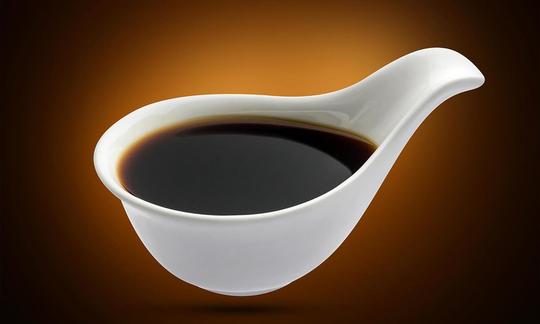

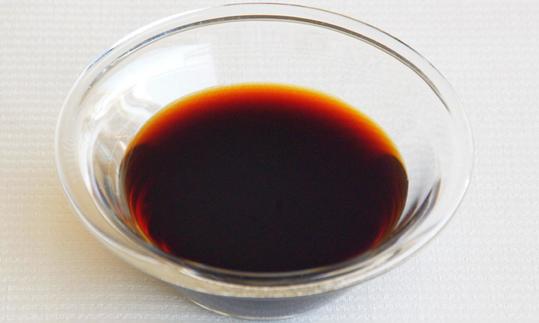

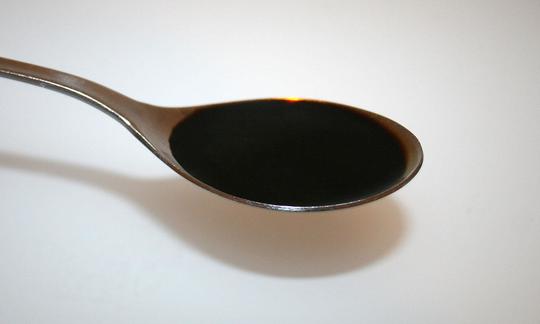





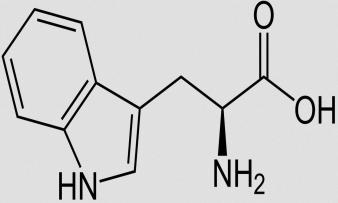
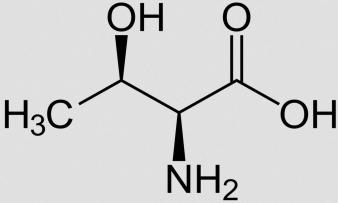


Comments